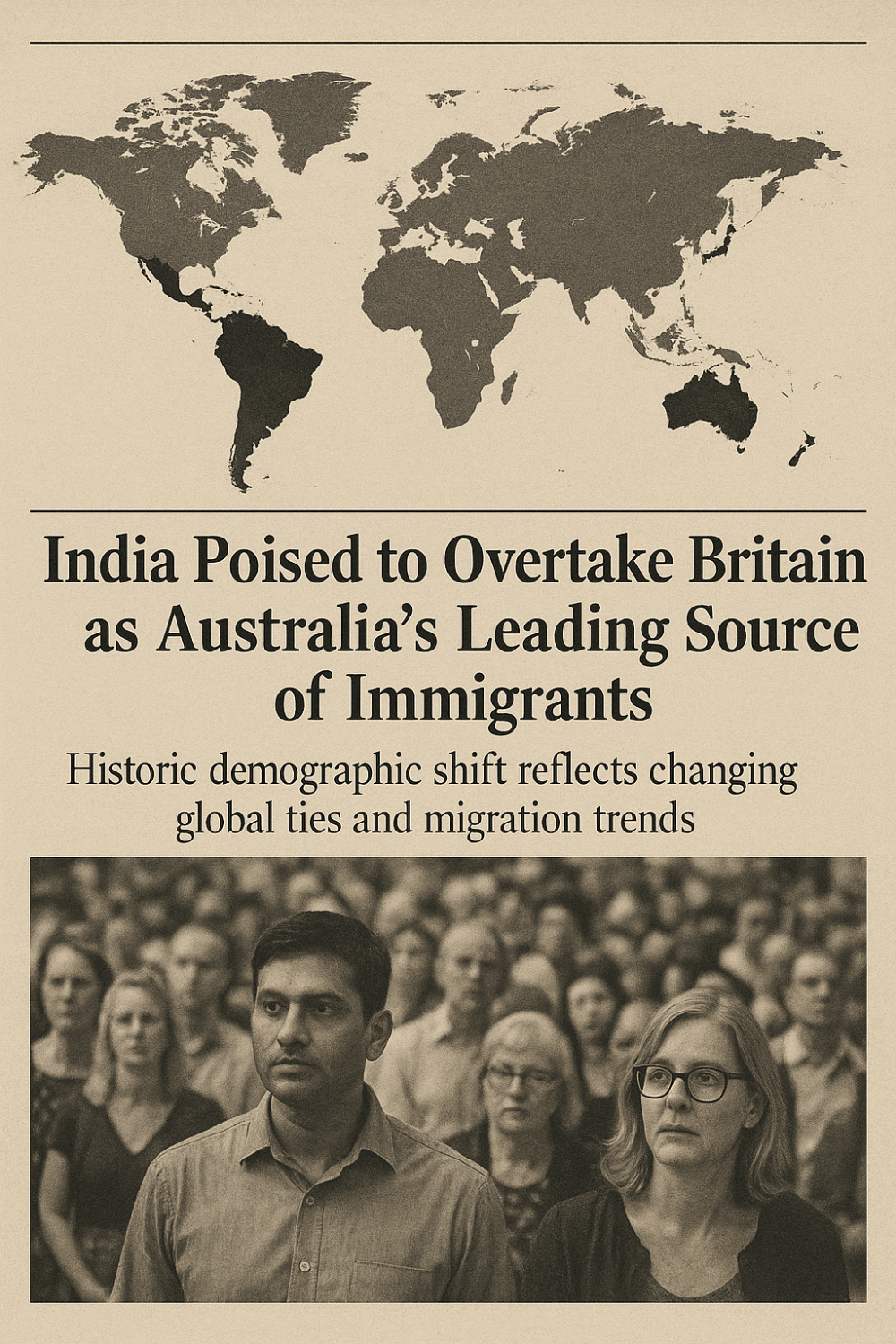
In a significant demographic shift that highlights Australia’s evolving immigration landscape, India is poised to overtake Britain as the country’s largest source of new migrants. This change would mark the first time since European settlement in 1788 that Britain is no longer the leading source of immigrants to Australia.
According to recent government data and migration trends, the number of Indian-born residents in Australia has steadily increased over the past two decades, propelled by skilled migration, international education, and family reunification programs. In contrast, migration from the United Kingdom has plateaued and, in some years, declined.
Experts say this milestone reflects Australia’s growing engagement with Asia, particularly South Asia, and its prioritisation of high-skilled workers from countries with strong education systems and English proficiency.
“The rise of India as a top source country is no surprise,” said migration analyst Dr. Linda Houghton. “India has a vast, young, English-speaking population that aligns well with Australia’s skilled visa requirements.”
As of 2024, nearly 800,000 Indian-born people reside in Australia, compared to just under 970,000 UK-born residents. However, with current growth rates, Indian-born Australians could surpass their UK counterparts as early as 2026.
This shift is not only a statistical milestone but also symbolic of Australia’s broader multicultural identity. From IT professionals and healthcare workers to students and entrepreneurs, Indian migrants are contributing across sectors and shaping Australia’s social and economic fabric.
The change also comes amid broader reforms to Australia’s migration system aimed at addressing skill shortages, boosting productivity, and promoting integration. The federal government is also investing in strengthening ties with India through trade, education, and diplomatic channels.
Community leaders have welcomed the demographic transformation as a reflection of Australia’s inclusive spirit. “Indian Australians are proud to be part of this country’s story,” said Anushka Rao, director of a multicultural organisation in Sydney. “This is a historic moment that highlights our shared future.”
As the balance shifts, so too does Australia’s global orientation—from its colonial past to its dynamic, multicultural present.